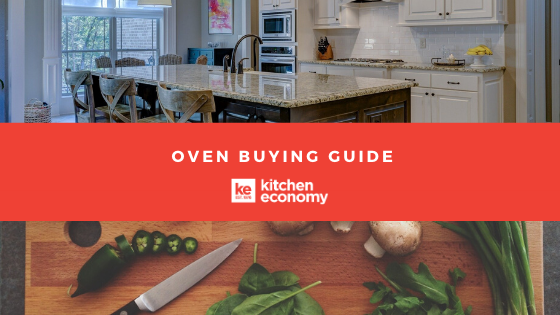
So you've decided you want to look for an oven? Luckily you've come to the right place! With lots of options available, it's important to evaluate what is available for your needs.
A popular choice for modern kitchen interiors, built-in ovens fit seamlessly into your worktops for a contemporary look that will be the envy of your guests.

FUEL
The first consideration you'll have to make is which fuel you would like to use. For ovens there are two choices, electric or gas.
Electric
By far the most popular choice, electric ovens are great for a whole multitude of culinary creations. Furthermore, as most electric models use a fan, heat is evenly distributed across the cavity for beautifully browned pastry bottoms.
Gas
Not as common as their electric counterparts, gas ovens are ideal for traditional-style dishes. As these models don't come with a fan motor, the hottest temperatures will be found at the top of the cavity.

CAVITIES
The second decision you'll have to make is how many cavities you will need. This will significantly change your cooking capacity, allowing to feed a large family gathering or a family of four.
Single Oven
Equipped with one large cavity, single ovens come in a variety of sizes. Starting at 65 litres and going up to as much as 115 litres, you'll be able to cook many dishes with ease. They can even be built-in at eye level or built-under your counter top.
Most standard ovens come with a conventional oven, grill and fan options, whilst higher-end models will come with steam functions and self-cleaning options.
Compact Oven
For smaller kitchens with limited counter space, compact ovens are a great option for you. Measuring around just 45cm high, they're about the same size as an integrated microwave and always come as electric.
Double Oven
Looking for larger and convenient cooking capacity? Double ovens come with two cavities for even more room for your culinary creations. The main oven comes with a capacity of around 50-75 litres and a smaller top oven of around 35-60 litres.
Built-Under
If you're looking to make the most out of your under counter space, built-under ovens come with two smaller cavities for flexible cooking. However, these models tend to have a slightly smaller cooking capacity than standard double ovens.

MEASUREMENTS
Ovens tend to only come in one width, letting you install them directly into your kitchen units. Most single, compact, double and built-under ovens tend to measure 59.7cm wide and 56cm deep.
The only measurement you will have to take note of is the height, depending on the number of cavities. Single ovens tend to measure around 60cm high, compact ovens 45cm high, double ovens 90cm high and built-under ovens 70cm high.

FEATURES
There are so many features with ovens on the market today, but we have listed a few below that you could make sure you look out for.
Self-Cleaning Functions
If you're fed up of having to constantly scrub away at stubborn burnt-on grease, grime and dirt, you can look out for self-cleaning functions. There are lots of different cleaning options, but the main two include:
- Pyrolytic cleaning - the oven heats up to extremely high temperatures to burn away food particles.
- Catalytic liners - these especially designed liners automatically absorb grease for hassle-free cleaning.
Fan-Assisted
Ensuring heat is evenly distributed across the cavity, fan-assisted ovens use a fan and motor to encourage hot air to flow across the shelves. This is ideal for amateur bakers looking for perfect bakes with every recipe.
Steam
To add an extra layer of finesse to your dishes, steam cooking options ensure meats stay moist and cakes remain fluffy and light.
Smart Technology
Do you own an Amazon Alex, Google Home or smartphone? Then you'll need to keep an eye on Smart ovens. This means you'll be able to adjust settings, functions and temperatures wirelessly.

OVEN FAQs
Having sold appliances for over 40 years, we've been asked a plethora of questions during an oven purchase. Here are a few of these.
What is the difference between hardwired and "plug & play" installation?
Most ovens need to be either hardwired or "plug & play" during installation. This means that the electrical cable needs to be wired by an electrician or can be simply plugged into the mains.
What is a conventional oven?
Unlike a convection ovens, a conventional model does not come with a fan motor. These models tend to have two heating elements, one at the base and one at the bottom, to heat up the air inside the cavity.
As the hot air isn't circulated by a fan, conventional ovens have pockets of hotter or cooler air that can result in uneven cooking results.
How much does it cost to install a oven?
Here at Kitchen Economy we have priced our installation services extremely competitively in the market for the cheapest basket value in South Wales!
- Electric oven - £50
- Gas oven - £78
On average, that puts us £20-£110 cheaper than AO, John Lewis, Currys and Appliances Direct!